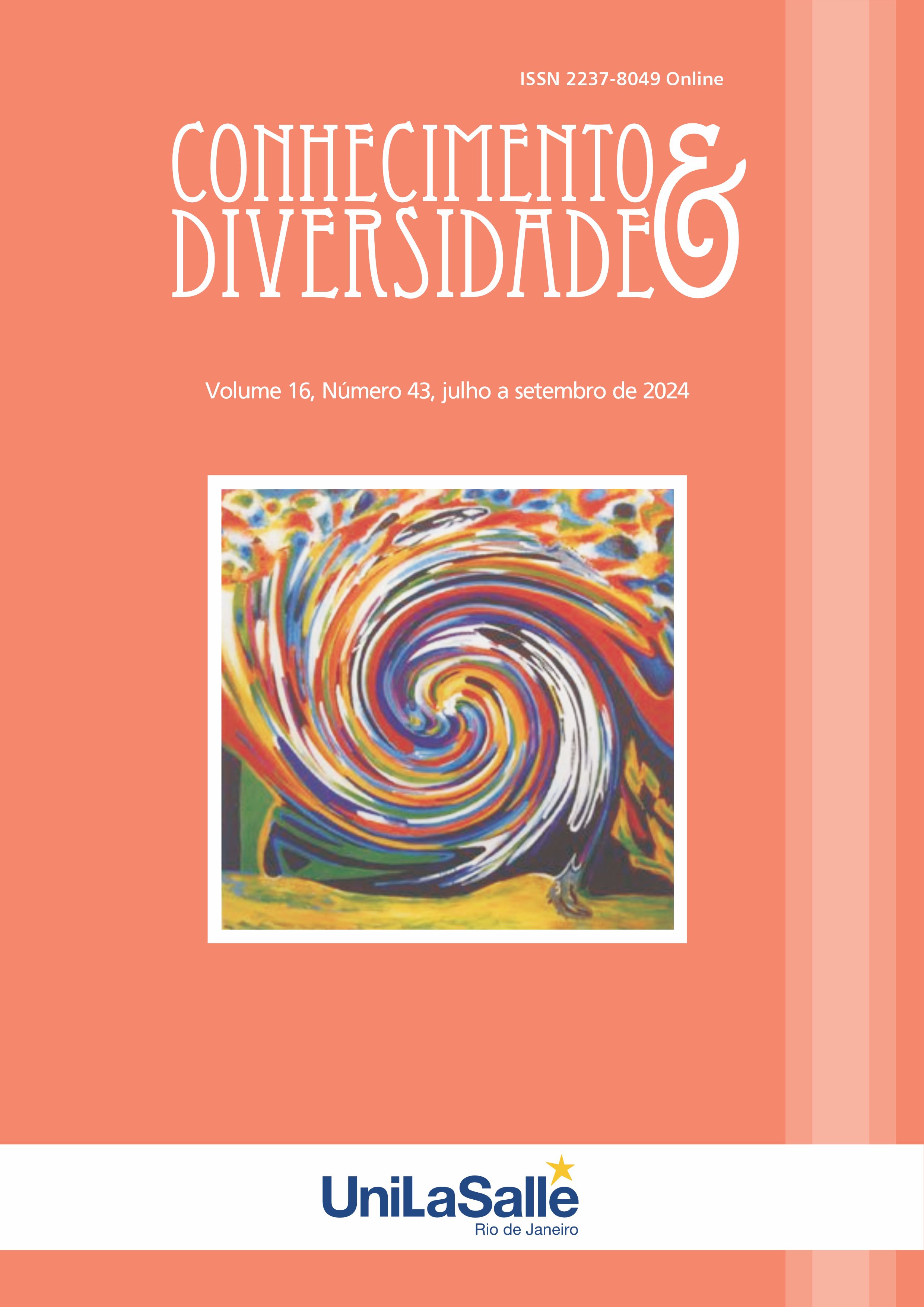VERBALISATION OF STATE GESTALT IMAGES ON THE MATERIALS OF OLD GERMAN LITERARY MONUMENTS
DOI:
https://doi.org/10.18316/rcd.v16i43.11882Keywords:
state image, cultural context, literary monument, vocabulary, identity formation, worldview.Abstract
The aim of the article is to study and analyse literary devices, used in Old German literature for the expression of state gestalt images. Methods. Methods of linguistic analysis, and comparative and historical-cultural analysis were used in the study. Means of descriptive statistics, Pearson’s criterion and Mann — Whitney U-test were used. The use of Cronbach's alpha ensured the verification of the reliability of instruments and methods. Results. The conducted analysis of the comparison of three Old German literary monuments confirmed that there are no significant differences between “Nibelungenlied” and “Beowulf”, which indicates the similarity in their structure and style. However, “Nibelungenlied” differs from “Edda” which certifies significant differences between these works. “Beowulf” also demonstrates significant differences with “Edda”. These results also underline significant similarities between “Nibelungenlied” and “Beowulf”, which are epic poems, and with “Edda”, which is a collection of poems. In particular, the philosophical aspects of the verbalisation of Gestalt states were highlighted. Conclusion. The study has found that state gestalt images reflect not only images of characters and scenes but also translate features and aspects of collective world perception by Old German Society. The received results expand understanding of linguistic and stylistic peculiarities of Old German literature. Perspectives. Further studies should focus on the expression of gestalt images in modern German literature.
References
Agee, J. R. (2021). Using Historical Glottometry to subgroup the early Germanic languages. Journal of Germanic Linguistics, 33(4), 319-357. https://doi.org/10.1017/S1470542721000027
Angerer, M. L. (2021). Beyond "Germanic" and "Christian" Monoliths: Revisiting Old English and Old Saxon Biblical Epics. JEGP, Journal of English and Germanic Philology, 120(1), 73-92. https://muse.jhu.edu/pub/34/article/784082/summary
Ashurova, Z. S. (2023). Basic principles and directions of linguistic and poetic research. Journal of Education, Ethics and Value, 2(5), 58-60. https://jeev.innovascience.uz/index.php/jeev/article/view/121
Azamatova, G. S. (2023). The functioning of the noun in German language (case category). Innovative Development in Educational Activities, 2(11), 420-426. https://openidea.uz/index.php/idea/article/view/1445
Babai, P. (2023). Metahistorical reflections in the projection of modern literature. Grail of Science, 32, 240-246. https://doi.org/10.36074/grail-of-science.13.10.2023.041
Bovsunivska, Т. (2021). Modern novel in the light of frame poetics. Literary Process: Methodology, Names, Trends, 17, 16–24. https://doi.org/10.28925/2412-2475.2021.17.2
Edda, The Poetic. (2005). In: C. Larrington (Trans.). Oxford University Press. https://books.google.com.ua/books/about/The_Poetic_Edda.html?id=nBzuQZ4MCPIC&redir_esc=y
Ellis, J. M. (2022). The theory of literary criticism: A logical analysis. Univ of California Press. https://books.google.com.ua/books?hl=uk&lr=&id=o5prEAAAQBAJ&oi=fnd&pg=PR9&dq=study+of+literary+text&ots=JSuhIjRf22&sig=DelO0ECebpST62WHPlGpn6j-Kbk&redir_esc=y#v=onepage&q=study%20of%20literary%20text&f=false
Goering, N. (2023, February). Metre in Old Saxon and Old High German. In Comparative Philology Graduate Seminar. https://hcommons.org/deposits/objects/hc:51608/datastreams/CONTENT/content
Heaney, S. (2000). Beowulf. Farrar, Straus and Giroux. W. W. Norton & Company. https://www.dvusd.org/cms/lib/AZ01901092/Centricity/Domain/2897/beowulf_heaney.pdf
Jäger, A., & Walkden, G. (2021). West Germanic. Comparison and Gradation in Indo-European, 281-348. https://doi.org/10.1515/9783110641325-012
Khaydarovna, U. S. (2023). Specific Aspects of Linguistic Study of Literary Characters. Zien Journal of Social Sciences and Humanities, 16, 38-40. https://zienjournals.com/index.php/zjssh/article/view/3309
Khomenko, Т. А. (2022, September). Lexical composition of Old Germanic languages. In: The 16 th International scientific and practical conference “Modern scientific research: achievements, innovations and development prospects” (p. 219). MDPC Publishing. https://sci-conf.com.ua/wp-content/uploads/2022/09/MODERN-SCIENTIFIC-RESEARCH-ACHIEVEMENTS-INNOVATIONS...-11-13.09.22.pdf#page=219
Lewthwaite, S., & Holmes, M. M. (2018). The Pedagogy of Social Science Research Methods Textbooks. University of Southampton.
Louden, M. L. (2020). Minority Germanic languages. The Cambridge Handbook of Germanic Linguistics (pp. 807-832). https://padutch.net/wp-content/uploads/2020/04/Louden_2020_Minority_Germanic_Languages.pdf
Nishino, H. (2021). The Origin of the English Language. Tokyo Future University bulletin, 15, 213-222. https://doi.org/10.24603/tfu.15.0_213
Oxonjonovich, A. S. (2023). Peculiarities of Semantics of Phraseological Units with Zoonyms. Journal of Pedagogical Inventions and Practices, 17, 98-102. https://zienjournals.com/index.php/jpip/article/view/3454
Palii, K. V., & Lupai, O. Yu. (2021). Sources of Scandinavian mythology. Doctoral dissertation. National University «Poltava Polytechnic named after Yury Kondratyuk». http://reposit.nupp.edu.ua/handle/PoltNTU/9267
Plomp, V. R. (2020). Estimating links between latent variables using Structural Equation Modeling in R. Bachelor thesis. TU Delft. http://resolver.tudelft.nl/uuid:a3944cfc-a831-4d6c-ad0a-04605a0f1b91
Roberge, P. (2020). Contact and the history of Germanic languages. The handbook of language contact, 323-343. https://doi.org/10.1002/9781119485094.ch16
Sajjad, F., Ahmed, M., Gul, N., Ikram, S., & Sultana, N. (2023). Analysis of linguistics inventiveness for representing cultural imagination and social realities in literary translation of the crooked line by Tahira H. Naqvi. PalArch's Journal of Archaeology of Egypt/Egyptology, 20(1), 771-791. https://archives.palarch.nl/index.php/jae/article/view/11821
Shapochkina, O. V. (2020). The relevance of generative sentence structures in the state category paradigm of Old Germanic languages. Scientific Bulletin of Kherson State University. The series «German studies and intercultural communication», 1, 63-69. https://doi.org/10.32999/ksu2663-3426/2020-1-9
Shapochkina, O. V. (2022). The state category in the context of the formation conditions of ancient Germanic ethnic groups. In: The VII International Scientific and Practical Conference «Science, trends and perspectives of development». February 21 – 23, Budapest, Hungary.
Simonetti, P. (2021). The Self in/and History. RSAJournal, 32. 87-103. https://doi.org/10.13135/1592-4467/8463
Standke, M. (2023). Middle Low German thieves’ tales: Ambivalent narratives and cultural adaptations. The German Quarterly. https://doi.org/10.1111/gequ.12336
Stefanowitsch, A., Smirnova, E., & Hüning, M. (2020). Complex adpositions in three West Germanic Languages: German, Dutch, and English. In: Complex Adpositions in European Languages. A Micro-Typological Approach to Complex Nominal Relators. Berlin/Boston (pp. 65-13). Walter de Gruyter GmbH. https://books.google.com.ua/books?hl=uk&lr=&id=mfUEEAAAQBAJ&oi=fnd&pg=PA65&dq=earliest+germanic+languages+old+english&ots=_Ezc0vxxa2&sig=JuHbNZhcsjAzWWgE8HIF1_kXDq4&redir_esc=y#v=onepage&q=earliest%20germanic%20languages%20old%20english&f=false
Stifter, D. (2020). The early Celtic epigraphic evidence and early literacy in Germanic languages. Nowele, 73(1), 123-152. https://doi.org/10.1075/nowele.00037.sti
Sunnatovna, A. G. (2023). The functioning of the noun in German language (case category). British View, 8(6). https://www.britishview.co.uk/index.php/bv/article/view/255
The Nibelungenlied. (2008). In: A. T. Hatto (Trans.). Penguin Classics.
Tursunovich, R. I. (2022). Linguistic and Cultural Aspects of Literary Translation and Translation Skills. British Journal of Global Ecology and Sustainable Development, 10, 168-173. https://www.journalzone.org/index.php/bjgesd/article/view/158
Downloads
Published
Issue
Section
License
Copyright (c) 2024 Olga Shapochkina, Olena Mashkina, Oksana Hrom, Maryna Kalashnykova, Oksana Syvyk

This work is licensed under a Creative Commons Attribution 4.0 International License.
As recommended by the Public Knowledge Project, RCD adopts for its articles a CREATIVE COMMONS Attribution CC BY 4.0 license.
This license allows others to distribute, remix, adapt and build upon your work, even commercially, as long as they credit you for the original creation.
This is the most appropriate license offered.
Recommended for maximum dissemination and use of licensed materials.



